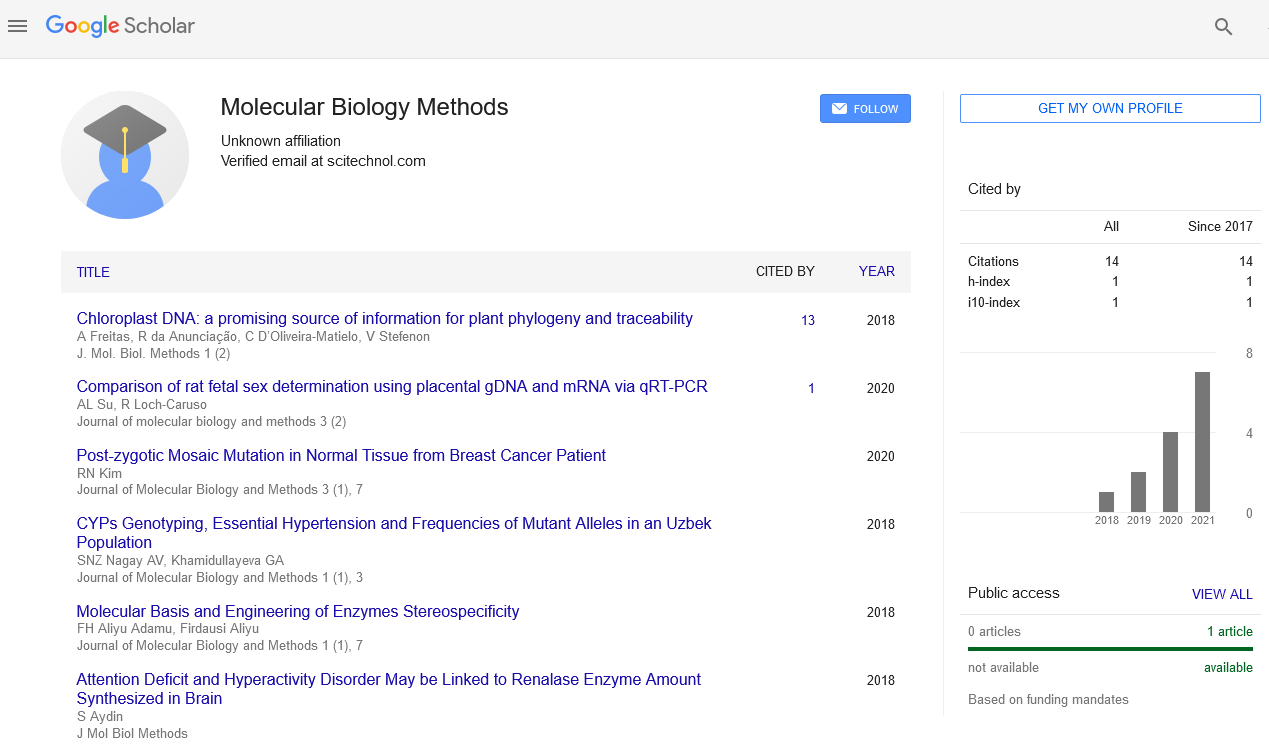Commentary, J Mol Biol Methods Vol: 6 Issue: 4
Genesis of Bioinformatics and its Applications across Biological Sciences
Adje Tanouayi*
1Department of Waste Management, University of Lome, Lome, Togo
*Corresponding Author: Adje Tanouayi,
Department of Waste Management,
University of Lome, Lome, Togo
E-mail: tanouayiadje77@gmail.com
Received date: 27 November, 2023, Manuscript No. JMBM-24-124362;
Editor assigned date: 30 November, 2023, Pre QC No. JMBM-24-124362 (PQ);
Reviewed date: 14 December, 2023, QC No. JMBM-24-124362;
Revised date: 21 December, 2023, Manuscript No. JMBM-24-124362 (R);
Published date: 28 December, 2023 DOI: 10.5958/jmbm.1000150
Citation: Tanouayi A (2023) Genesis of Bioinformatics and its Applications across Biological Sciences. J Mol Biol Methods 6:4.
Description
In the vast realm of biological sciences, the interplay between biology and information technology had given birth to a revolutionary field known as bioinformatics. This multidisciplinary domain is a combination of marries the principles of biology, computer science, mathematics, and statistics to decipher, analyze, and comprehend biological data. At its core, bioinformatics delves into the intricacies of life’s blueprint, the genetic code, while also exploring a myriad of biological phenomena at molecular, cellular, and systemic levels.
The genesis of bioinformatics can be traced back to the momentous breakthroughs in molecular biology that unveiled the structure of DNA and culminated in the Human Genome Project (HGP). As researchers unraveled the DNA double helix and decoded the human genome, the sheer volume and complexity of biological data became apparent. Handling this deluge of information necessitated the integration of computational tools and methodologies, giving rise to bioinformatics.
Bioinformatics encompasses a diverse toolkit that aids in the analysis, interpretation, and visualization of biological data. Sequence alignment algorithms, such as Basic Local Alignment Search Tool (BLAST), are fundamental in comparing DNA, RNA, or protein sequences, unveiling evolutionary relationships and functional similarities. Additionally, structural bioinformatics employs computational models to predict and analyze the three-dimensional structures of proteins, important for understanding their functions and interactions.
The field also relies heavily on databases storing genetic sequences, protein structures, and metabolic pathways. These repositories, like GenBank and UniProt, serve as invaluable resources for researchers worldwide, facilitating data retrieval and analysis.
Bioinformatics permeates various domains within biological sciences. In genomics, it aids in genome sequencing, annotation, and comparative genomics, shedding light on genetic variations and evolutionary relationships among species. Transcriptomics focuses on studying gene expression patterns, which help understand cellular functions and responses to stimuli or diseases. Proteomics, on the other hand, investigates the structure, function, and interactions of proteins within the cellular milieu.
Beyond these, bioinformatics plays a pivotal role in systems biology, modeling complex biological systems to comprehend their behavior and interactions comprehensively.
Despite its advancements, bioinformatics confronts numerous challenges. Managing and analyzing colossal datasets demands robust computational infrastructure and sophisticated algorithms capable of handling big data. Moreover, ensuring data accuracy, security, and standardization remains critical for reliable analysis and interpretation.
Looking ahead, the future of bioinformatics seems promising. Advancements in machine learning and artificial intelligence are poised to revolutionize data analysis, enabling more accurate predictions and uncovering intricate biological relationships. Furthermore, the integration of multi-omics data (genomics, proteomics, metabolomics, etc.) promises a holistic understanding of biological systems, paving the way for personalized medicine and targeted therapies.
As bioinformatics strides towards personalized medicine, ethical considerations surrounding data privacy, consent, and genetic discrimination come to the forefront. Balancing the benefits of utilizing genetic information for healthcare with the protection of individuals' privacy and rights remains a critical ethical dilemma.
Moreover, the democratization of bioinformatics tools and databases empowers researcher’s worldwide, fostering collaboration and accelerating scientific discoveries. However, it also raises concerns about data accessibility, intellectual property rights, and potential discrepancies in global scientific advancements.
Bioinformatics stands at the nexus of biological sciences and information technology, wielding immense potential to unlock the mysteries of life. Its applications span from unraveling the genome to deciphering complex biological networks, offering profound insights into disease mechanisms, evolutionary processes, and personalized medicine. As technology continues to advance, bioinformatics is poised to revolutionize our understanding of life and its myriad complexities, steering us towards a future where precision and personalized healthcare become the norm.
In essence, bioinformatics is not merely a field; it represents an amalgamation of scientific ingenuity and technological prowess, shaping the future landscape of biological research and healthcare.
 Spanish
Spanish  Chinese
Chinese  Russian
Russian  German
German  French
French  Japanese
Japanese  Portuguese
Portuguese  Hindi
Hindi 